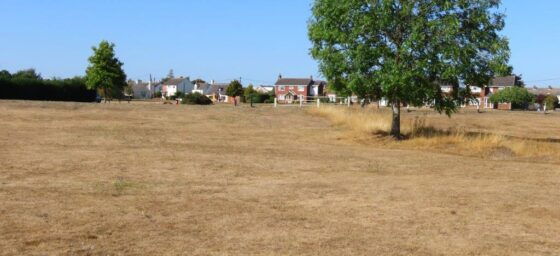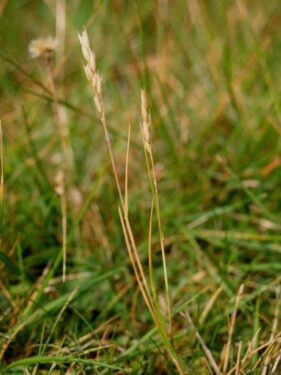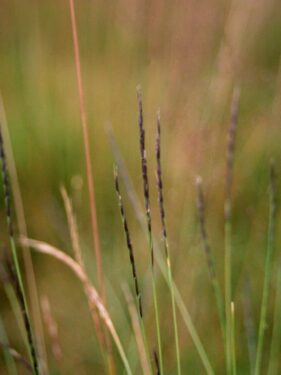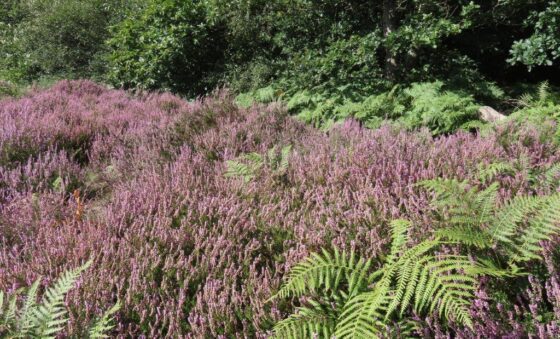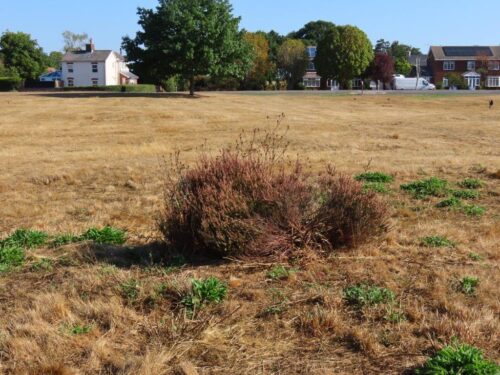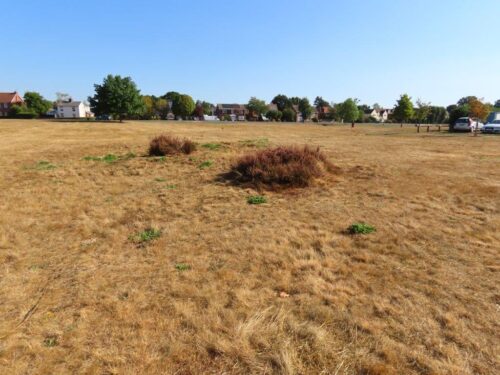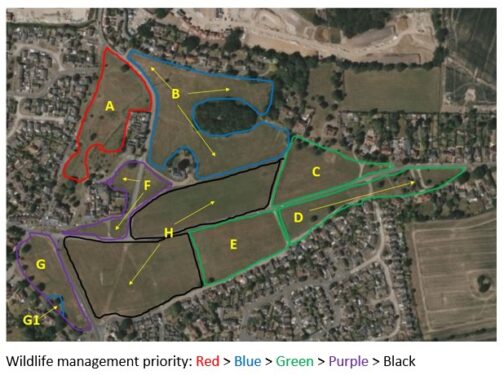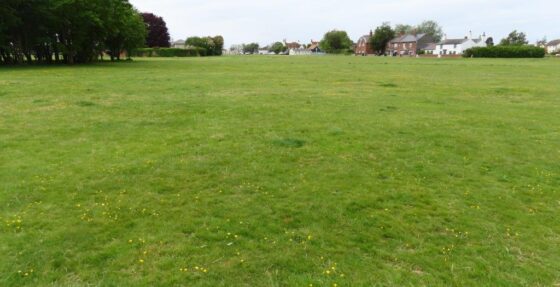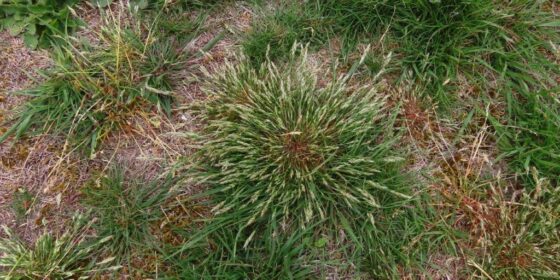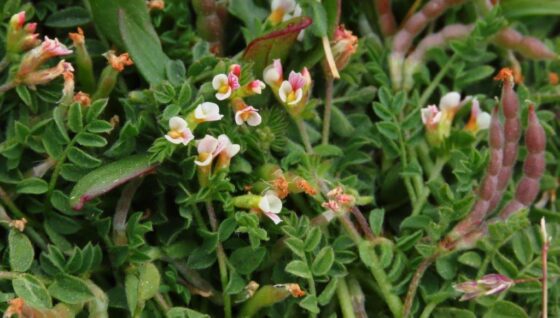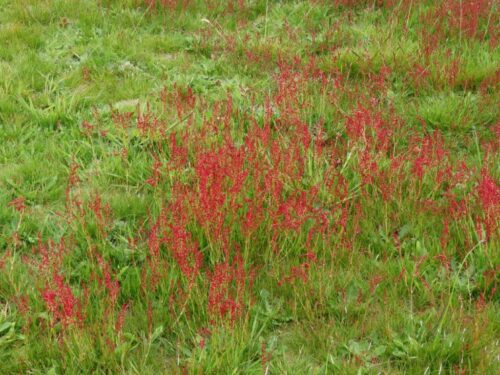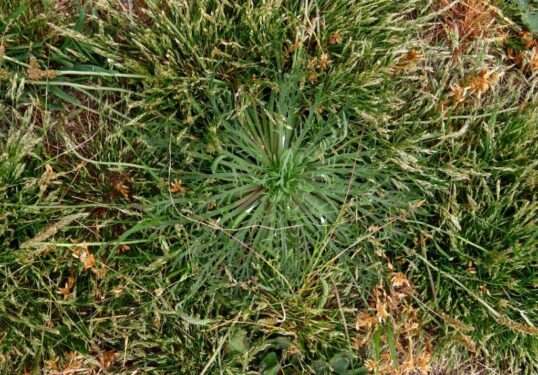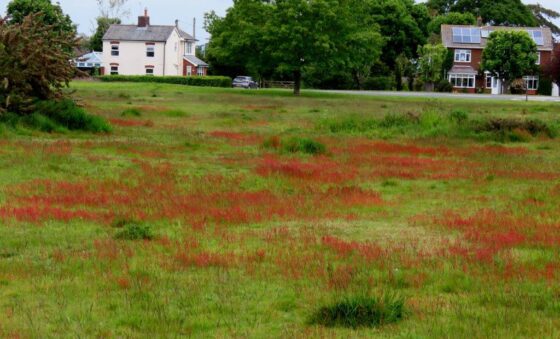Back in August, we were asked by the Chair of Great Bentley Parish Council (and a member of their newly-formed Environment Working Group) if we would mind advising them on the ecological value of the Village Green and the potential to improve its biodiversity by reducing mowing frequency.
What an opportunity! Reputedly the second largest Village Green in the country, extending to around 17 hectares, from my previous knowledge of the site it was clear it has an interesting remnant flora despite the incessant mowing of the past. Or at least ‘had’ an interesting flora – my last wander on the Green was 20 years ago… but I well recall the excitement of finding two special grasses, Heath-grass and Mat-grass there:
While both these species are widespread in the UK, that is far from the case in Essex, and especially in Tendring – indeed for these two species, Great Bentley Village Green is probably the only site in Tendring District. Almost the same could be said for the plant growing alongside them, Common Heather: despite the frequent appearance of the name ‘Heath’ in local settlements (and its superabundance down most of the Suffolk coastal Sandlings), the Tending Heather population away from Great Bentley was restricted to a few sprigs in a few woodland rides. One of these, Cockaynes Wood in Alresford, has been nurtured and managed while all around it the trees came tumbling down through gravel extraction; the population there is now amongst the finest Essex has to offer.
Back at Great Bentley though, no such recovery (yet), even though the heathery area has long been recognised, valued and not over-managed. All those years ago I was drawn to the rare grasses by the obvious presence of those few Heather bushes, and when I returned this year, the same few bushes were still standing, sentinels of a heathland history. Clearly here was somewhere we might be able to make a real difference on the ground, so we readily agreed to the Council’s request.
Unfortunately, as the pictures show, the height of last summer’s drought was not the best time to assess the botanical riches of the site, but there were still some signs of green (and even flower) from Yarrow, Autumn Hawkbit, Common Knapweed and Mouse-eared Hawkweed for example, all signs of the relatively natural state of at least parts of the Green.
A very simple walk-over allowed time to evaluate it and make recommendations as to the best areas for managing more of the site as an autumn-cut hay meadow rather than as the overmown, lifeless green carpet typical of most municipal recreation areas. The map below shows a rough apportioning of the blocks of the Green into areas of greatest priority for conservation, based upon their naturalness, apparent history of recreational use, topography and richness of the flora.
We look forward to at least some of our recommendations being implemented, to the benefit not only of the flowers, but the insects that are dependent upon them, and carbon sequestration as well – a good grassland stores as much carbon from the atmosphere as woodland. All that … and it would save the Council money as well!
May 2023 update
What a transformation! The whole Green was actually green, and a whole lot more plants of interest were recognisable in May.
Interestingly, and reassuringly, none of what I found this Spring led me to reassess significantly the priority rating of the various sectors. Clearly the most important sections for biodiversity are A and B, as evaluated previously, the only difference to my previous assessment being that the north-western section of area B is clearly of equivalent value to A, lacking only the Heather component.
After a damp spring, this subsection of B is already becoming highly droughted, bare patches are forming, and grass growth is insignificant, no doubt because they are on pure sand/gravel deposits. The most important species found, in abundance, were Early Hair-grass and Bird’s-foot, neither of which is at all common in north Essex, together with lovely reddened patches of Sheep’s Sorrel and occasional rosettes of Buck’s-horn Plantain.
Such naturally droughted habitat, grass-heath at its most extreme, is of such value lately that I would class this site (particularly areas A and B) as of county-wide significance.
